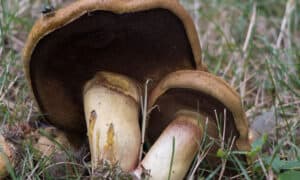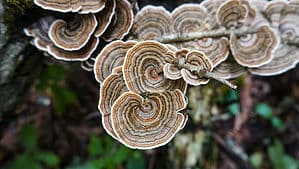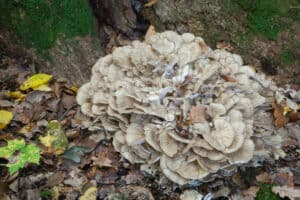Shiitake mushrooms have a large brown cap and a light cream underside, with a slim and fibrous stem that can be shaggy. They are distinguished by their unique flavor, which is buttery, rich, and umami, all mixed with a meaty texture. Shiitake mushrooms have been used in Eastern Asian cooking for hundreds of years, as it is believed that an ancient deity gifted the world with medicinal mushrooms, including shiitakes, over 100 million years ago. Nowadays, they are mostly cultivated on cut logs or on sawdust. It is also possible to grow them at home through the use of kits.
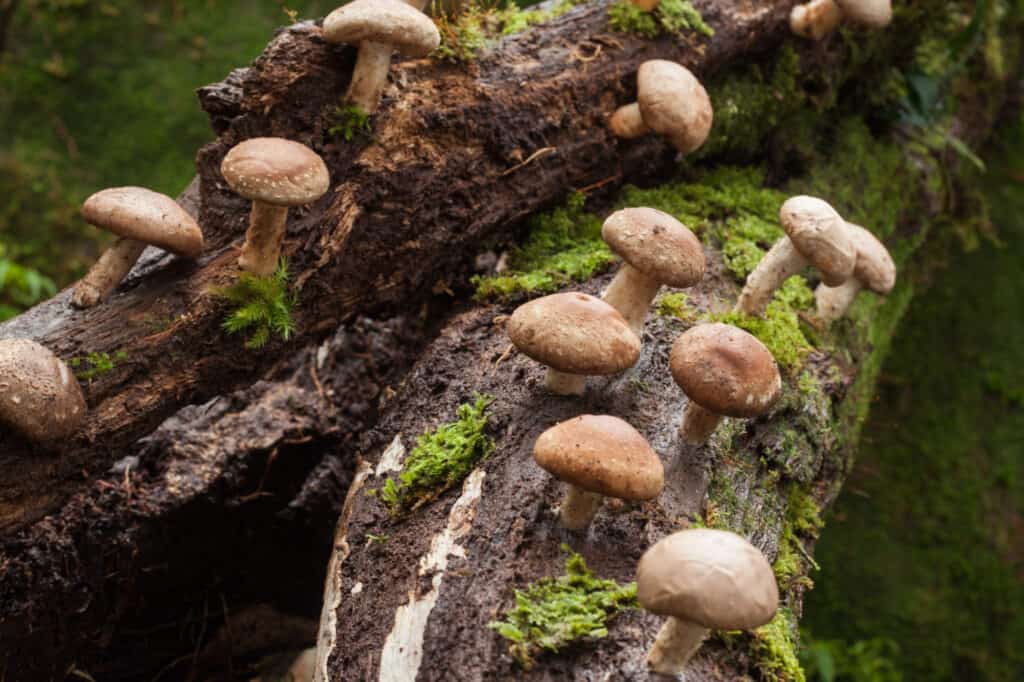
Shiitake mushrooms have a large brown cap and a light cream underside, with a slim and fibrous stem.
©puttography/Shutterstock.com
How To Select Them
When selecting traditional dried shiitakes, look for mushrooms with deep white cracks in the caps. These are believed to have the strongest flavor.
Fresh shiitake mushrooms should be shaped like an umbrella and firm, not soft or limp. The edges of the umbrella should roll inward when squeezed gently between your fingers. The stem and underside of the cap should have a tan-to-white coloration. These parts shouldn’t be brown or blackened, as this could indicate that they are past their optimal freshness. Furthermore, make sure that the mushrooms aren’t wet – if there is any moisture present on them, then it’s best to avoid buying them as they may spoil quickly once stored at home.
How To Store Them
When it comes to storing dried shiitake mushrooms, you should always opt for an airtight container. This will help ensure that the flavor and texture of your mushrooms won’t be compromised, as they tend to absorb the taste of nearby items. It is best to store them in a cool, dark place. This could mean a pantry or cupboard away from direct sunlight or heat sources or inside the fridge. Dried shiitakes can last up to one year when stored properly under these conditions.
On the other hand, fresh shiitake mushrooms can be stored in a paper bag in the fridge. Cover them loosely and change the paper bag every few days if it gets soggy. The paper will absorb the moisture, helping your mushrooms to stay fresh longer. When kept in the refrigerator this way, they will last up to ten days.
If you do not think you will be able to use them within a week or two, you can place the mushrooms on a tray in the refrigerator and allow them to dry. Once their caps are firm, seal them in an airtight container and store them in a dry, cold location until you are ready to use them. Additionally, you can cut them before sealing them or use a food dehydrator to dry larger amounts rapidly.
If you are planning to use shiitake mushrooms in soup, stew, or stir-fry, you can also freeze them. You can freeze them pre-cooked or raw. For raw storage, brush off any dirt with a dry bush and slice the mushrooms evenly. Lay them out on a cookie sheet covered in parchment paper. Freeze them for a few hours until they are solid. Then transfer the frozen mushrooms to a freezer bag. When thawed out, the texture is rather mushy, but if you are using them for soup, this method will work just fine.
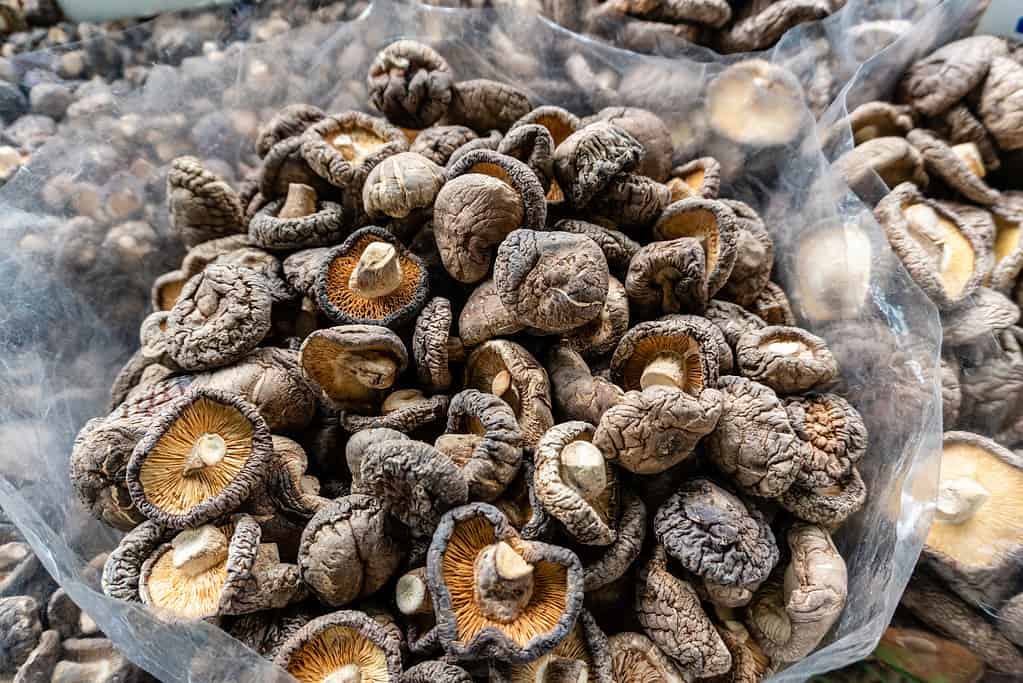
Dried shiitakes can last up to one year when stored properly.
©iStock.com/Jiradelta
How to Eat Them?
Edible fungi such as shiitake mushrooms are a great source of nutrients and have a variety of health benefits. It is important to cook shiitakes before consuming them in order to reap the full benefits and avoid any allergic reactions.
To prepare shiitake mushrooms for cooking, you can either soak them in warm water for five minutes beforehand or add them to the dish while it is cooking. If you choose to rehydrate the mushrooms before use, the soaking liquid can be added to the recipe for additional flavor as long as it is cooked.
Shiitake stems are a little tough to eat, but they are filled with flavor! You can use them to make broth by adding them to your stock pot. After the broth is finished, you can either discard the stems or put them in your compost. The caps of these mushrooms can be roasted, sautéed, or grilled. They have a lot of uses in dishes like broth, vegetarian meals, stir-fries, and more.
How To Drink Them
Shiitake tea is a great way to get the health benefits of shiitakes without having to eat them. To make the tea, begin by soaking dried shiitakes in room temperature water for an hour. After they have soaked, cut them into pieces and heat two cups of the soaking water in a pot with the mushrooms. Add a pinch of salt as well. Simmer everything together for 10-20 minutes until the liquid has reduced by half. Once finished, strain out any solids and enjoy your shiitake tea!
What About Shiitake Powder?
Shiitake powder is a great way to add flavor and nutrition to your meals. It can be added to soups, sauces, marinades, or sprinkled on top of dishes as a garnish. You can also use it in baking recipes like bread, muffins, cakes, and cookies for an extra boost of umami flavor! Shiitake mushrooms are naturally rich in vitamin B6, so adding the powder to your diet on a regular basis can help support overall health.
If you don’t want to buy pre-made shiitake powder, then you can always make your own at home – all you need is some dried shiitakes which you’ll need to break into small pieces before grinding them up. A spice grinder, mortar and pestle, or even a small hand blender are good for this purpose. Making your own mushroom powder allows you to easily make shiitake tea. Or try adding the mushroom powder to your coffee!
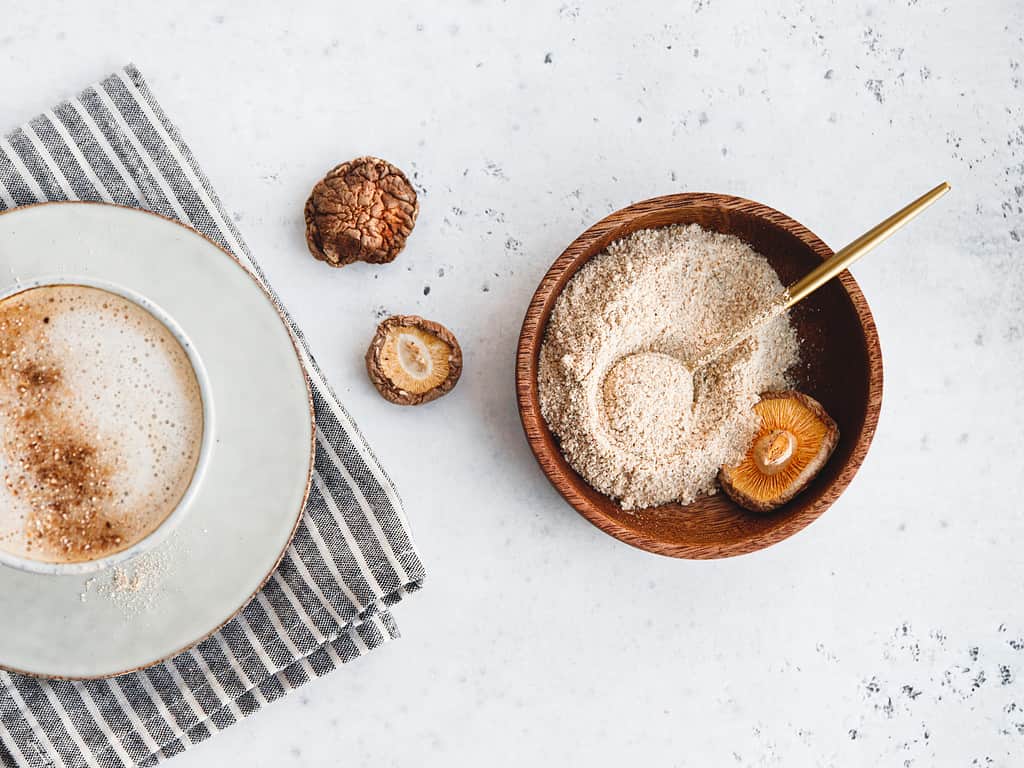
Shiitake mushroom powder can be used in drinks such as tea or coffee.
©iStock.com/Edalin
Nutrition Facts
Growing shiitake mushrooms is a great idea as they provide many health benefits. Every shiitake mushroom (19g) has six calories, 58 mg of potassium, 1.3g of carbohydrate, 0.4g of protein, and 5 percent of your daily value of Vitamin B6.
Shiitake mushrooms are a source of complete protein as they contain all eight essential amino acids. These amino acids are not able to be produced within the body and must come from food sources.
Vegetarians frequently consume shiitake mushrooms as a replacement for meat due to their flavorful taste, meat-like consistency, and a vast array of nutrients. This makes them an ideal supplement to any diet.
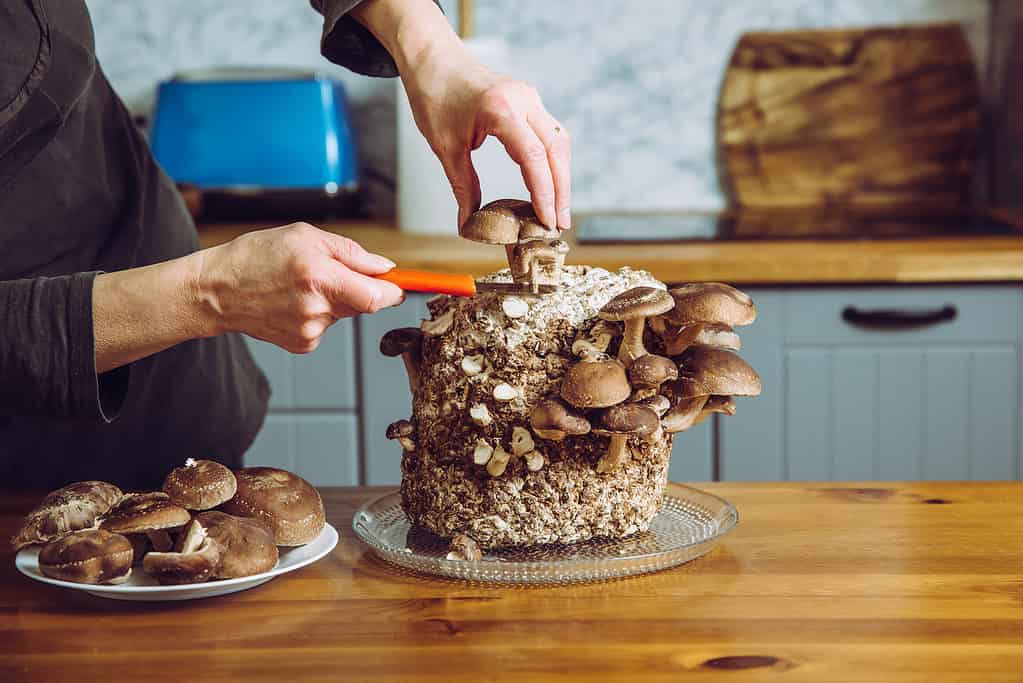
Growing shiitake mushrooms is a great idea as they provide many health benefits.
©FotoHelin/Shutterstock.com
Are They Poisonous to Pets?
Shiitake mushrooms are not poisonous to cats or dogs, and cooked shiitake can be a beneficial addition to a dog’s diet. Dogs may receive the same nutritional benefits from this mushroom as people do, such as vitamin B, vitamin D, minerals like iron and copper, dietary fiber, and more. However, it is still recommended that you check with your veterinarian first in case there are any interactions between the mushroom and any existing medications or conditions your pet has.
Cats should not be given shiitake mushrooms – while they won’t get sick if they ingest some of them accidentally, they are obligate carnivores, so consuming large quantities of mushrooms is not good for their health.
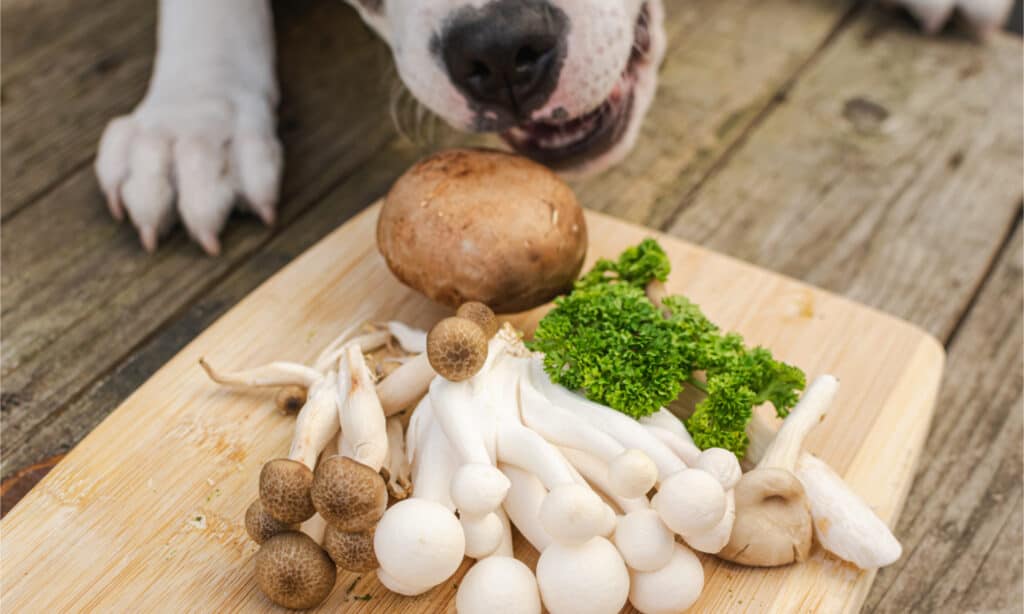
Shiitake mushrooms are not poisonous to cats or dogs.
©tismaja/Shutterstock.com
Summary of How to Store Shiitake Mushrooms
| Shiitake Mushrooms | Shiitake Facts |
|---|---|
| Taste | Rich, buttery, umami, smokey, earthy |
| How to Select | Dry – Look for white cracks in caps. Fresh – Firm, dry, and tan or white. |
| How to Store | Dry – airtight container in a cold, dry, dark place. Fresh – Store in a paper bag in the fridge for 7-10 days Dehydrate them, freeze them, or powder them. |
| Nutrition Facts in One 19g mushroom | Six calories. 58mg potassium. 1.3g carbohydrate. 0.4g protein. 5% Vit. B6. 1% Magnesium |
| Poisonous? | Non-toxic to dogs and cats. |
The photo featured at the top of this post is © Topnmp/Shutterstock.com
The information presented on or through the Website is made available solely for general informational purposes. We do not warrant the accuracy, completeness, or usefulness of this information. Any reliance you place on such information is strictly at your own risk. We disclaim all liability and responsibility arising from any reliance placed on such materials by you or any other visitor to the Website, or by anyone who may be informed of any of its contents. None of the statements or claims on the Website should be taken as medical advice, health advice, or as confirmation that a plant, fungus, or other item is safe for consumption or will provide any health benefits. Anyone considering the health benefits of particular plant, fungus, or other item should first consult with a doctor or other medical professional. The statements made within this Website have not been evaluated by the Food and Drug Administration. These statements are not intended to diagnose, treat, cure or prevent any disease.
Thank you for reading! Have some feedback for us? Contact the AZ Animals editorial team.



